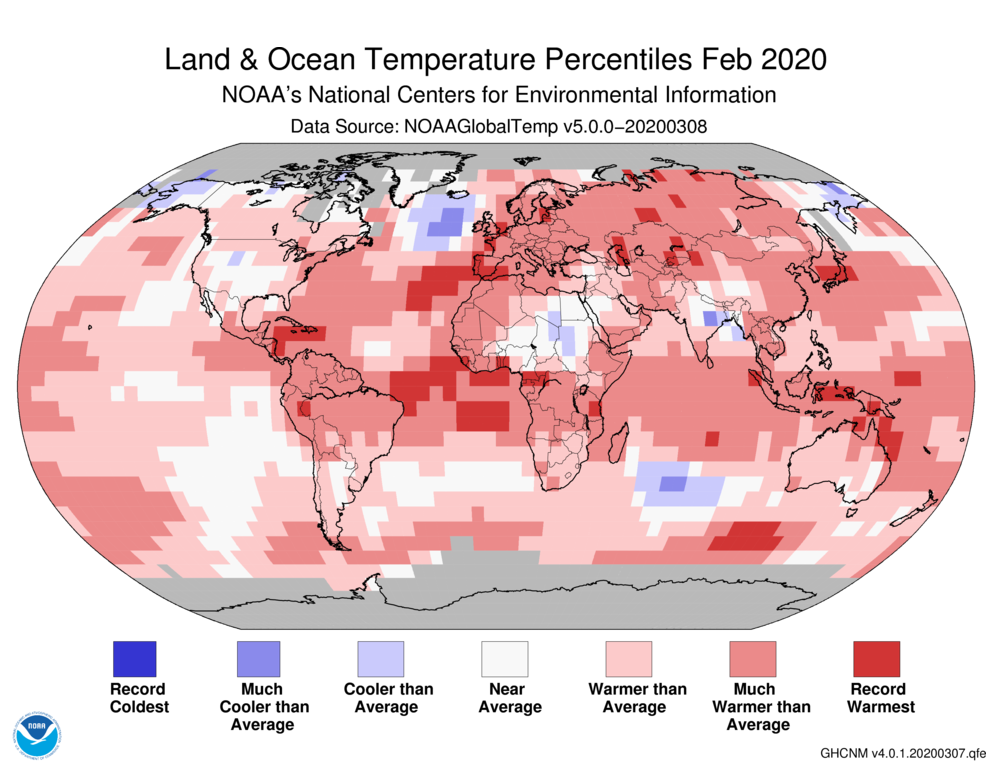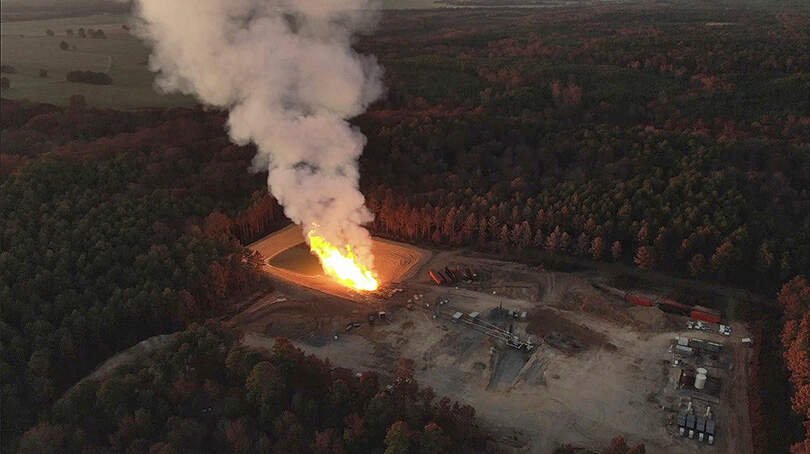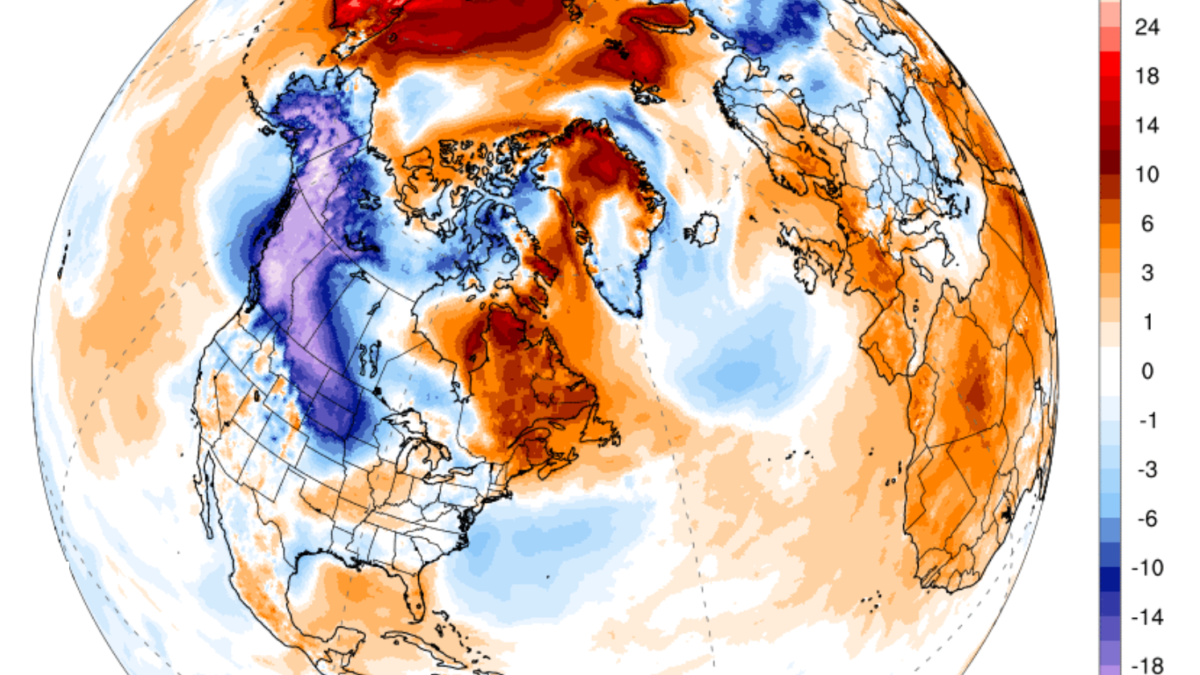February 2020 second warmest on record globally
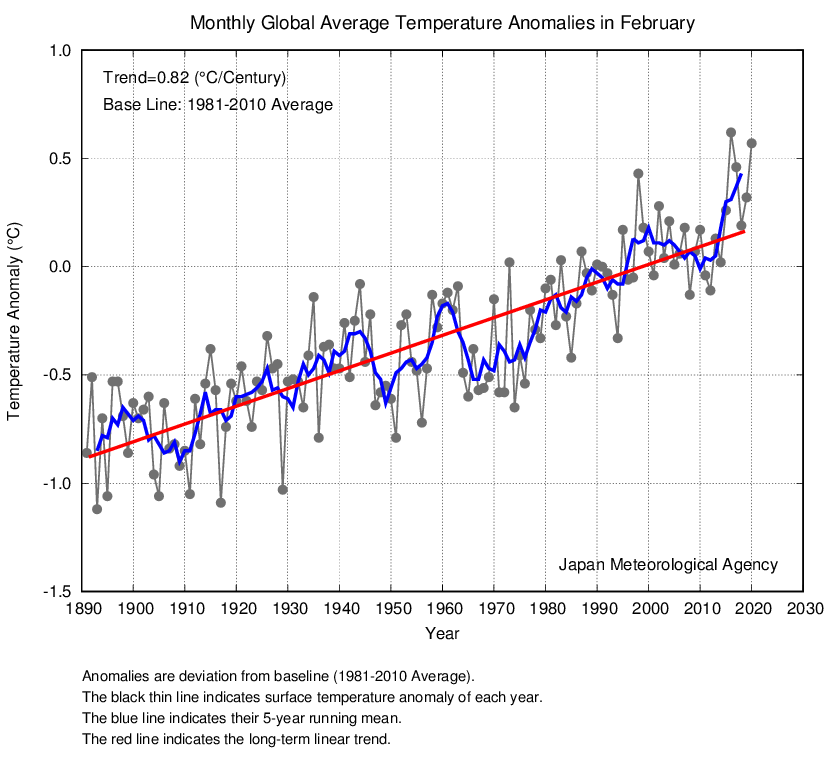
By Bob Henson
13 March 2020
(Weather Underground) – Research groups across the world concur that this past northern winter (December-February) was the second-warmest on record globally, in records going back more than a century. The latest group to confirm this finding is NOAA, in its monthly State of the Climate report issued Friday.
The winter result was a product of the second-warmest December, warmest January, and second-warmest February in the NOAA analysis, which extends back to 1880. For those three months combined, the global temperature was 1.12°C (2.02°F) above the 20th-century average. This reading is just 0.06°C (0.1°F) behind the record set in 2015-16.
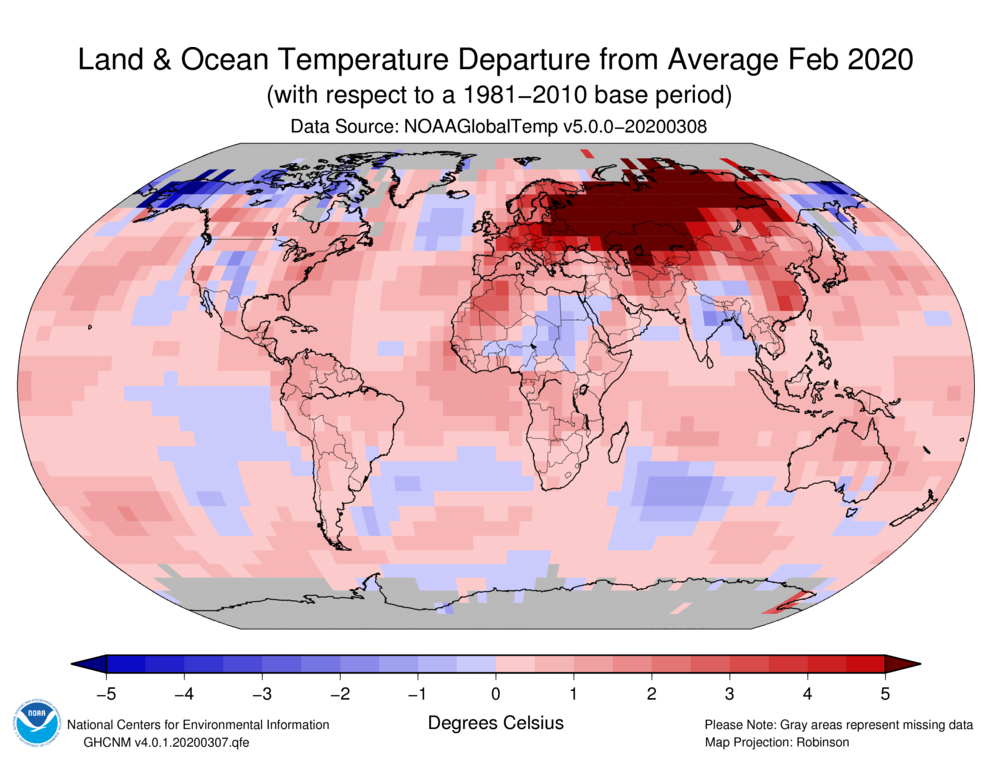
The global warmth of the past few months is especially striking given the lack of an El Niño event, which raises global air temperatures by releasing heat stored in the tropical Pacific Ocean.
Global temperatures in the record-warm winter of 2015-16 were boosted by very strong El Niño conditions. In contrast, there was no El Niño event this past winter, although temperatures in the central tropical Pacific were unusually warm.
Like NOAA, NASA also ranked the winter as the planet’s second-warmest on record. In the NASA database, December and February were the second-warmest on record, just behind 2015-16, while January 2020 tied with January 2016 as the warmest on record.
The Japan Meteorological Agency had not yet released its temperature calculations for February. [Update: available now. –Des]
Not only was last month the planet’s second warmest February—it was the third warmest of any month in terms of departure from average, coming in 1.17°C (2.11°F) above the 20th-century average. The only higher departures on record were in February and March 2016, during the extreme El Niño event noted above. [more]
